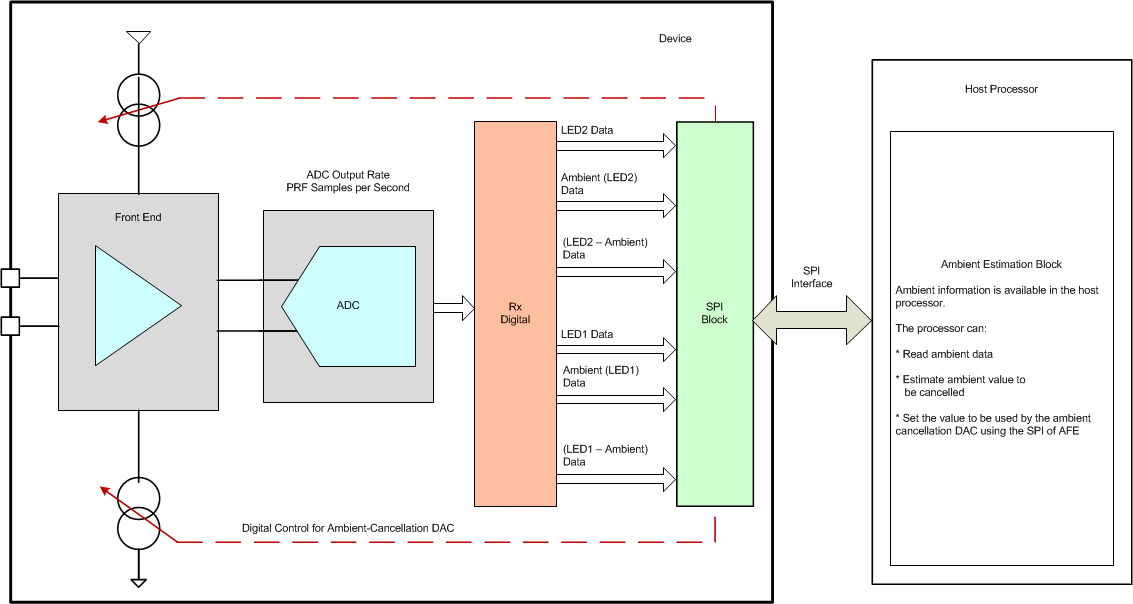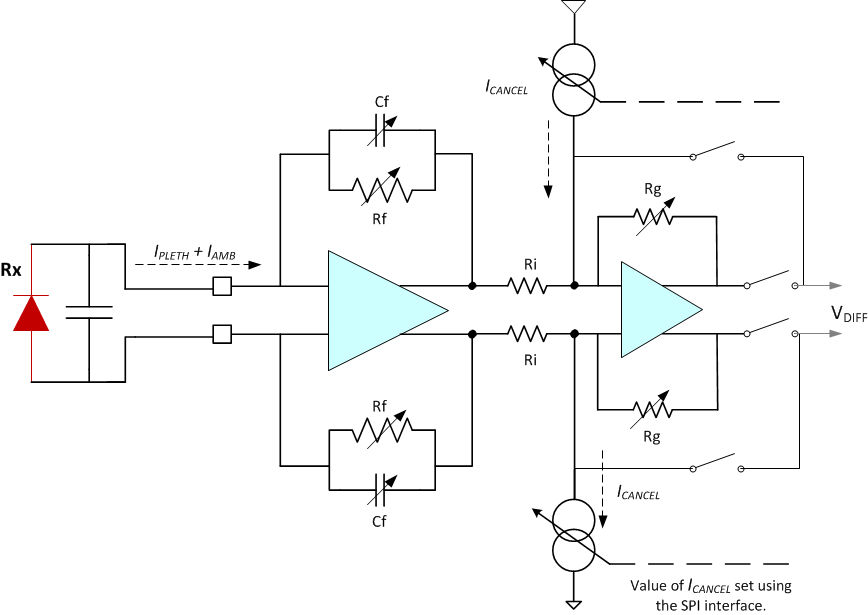ZHCSCL7C May 2014 – April 2021 AFE4403
PRODUCTION DATA
- 1 特性
- 2 应用
- 3 说明
- 4 Revision History
- 5 Device Family Options
- 6 Pin Configuration and Functions
- 7 Specifications
- 8 Detailed Description
- 9 Application Information Disclaimer
- 10Power Supply Recommendations
- 11Layout
- 12Device and Documentation Support
- 13Mechanical, Packaging, and Orderable Information
8.3.1.2 Ambient Cancellation Scheme and Second Stage Gain Block
The receiver provides digital samples corresponding to ambient duration. The host processor (external to the AFE) can use these ambient values to estimate the amount of ambient light leakage. The processor must then set the value of the ambient cancellation DAC using the SPI, as shown in Figure 8-4.
 Figure 8-4 Ambient Cancellation Loop (Closed by the Host Processor)
Figure 8-4 Ambient Cancellation Loop (Closed by the Host Processor)Using the set value, the ambient cancellation stage subtracts the ambient component and gains up only the pleth component of the received signal; see Figure 8-5. The amplifier gain is programmable to 0 dB, 3.5 dB, 6 dB,
9.5 dB, and 12 dB.
 Figure 8-5 Front-End (I-V Amplifier and Cancellation Stage)
Figure 8-5 Front-End (I-V Amplifier and Cancellation Stage)The differential output of the second stage is VDIFF, as given by Equation 3:

where:
- RI = 100 kΩ,
- IPLETH = photodiode current pleth component,
- IAMB = photodiode current ambient component, and
- ICANCEL = the cancellation current DAC value (as estimated by the host processor).
RG values with various gain settings are listed in Table 8-1.
| GAIN | RG(kΩ) |
|---|---|
| 0 (x1) | 100 |
| 3.5 (x1.5) | 150 |
| 6 (x2) | 200 |
| 9.5 (x3) | 300 |
| 12 (x4) | 400 |